FEATURE: 11-Year Marathon Training Coach Walter Martinez Answers the FAQs Asked by Marathon Training Newcomers
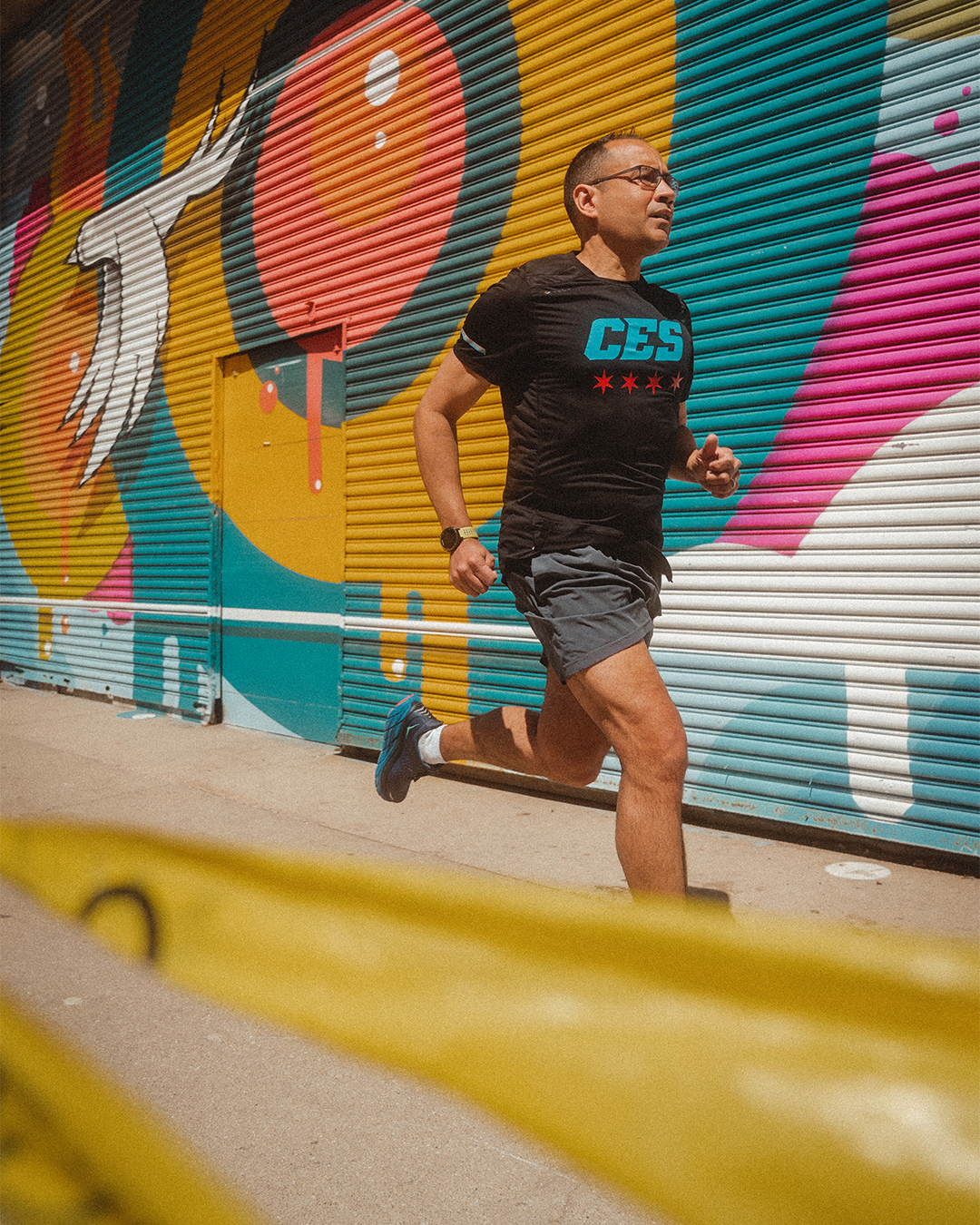
For many living in Chicago, marathon training begins the first weekend of June. Chicago Endurance Sports coach Walter Martinez has been coaching marathon training for over 11 years. He’s run over 35 marathons, his PR is 2:59:38, he's run a marathon (and thrown up) through flu-like symptoms, and we asked him some of the most frequently asked questions by marathon training newcomers.
This year's marathon training program powered by Chicago Endurance Sports is sponsored by HOKA ONE ONE. Walter coaches out of the Fleet Feet Lincoln Square location and also works on the sales floor in his spare time. If you're ever visiting the store, feel free to pick his brain. He's a plethora of knowledge. Walter wears the brand-new HOKA ONE ONE Clifton 8.
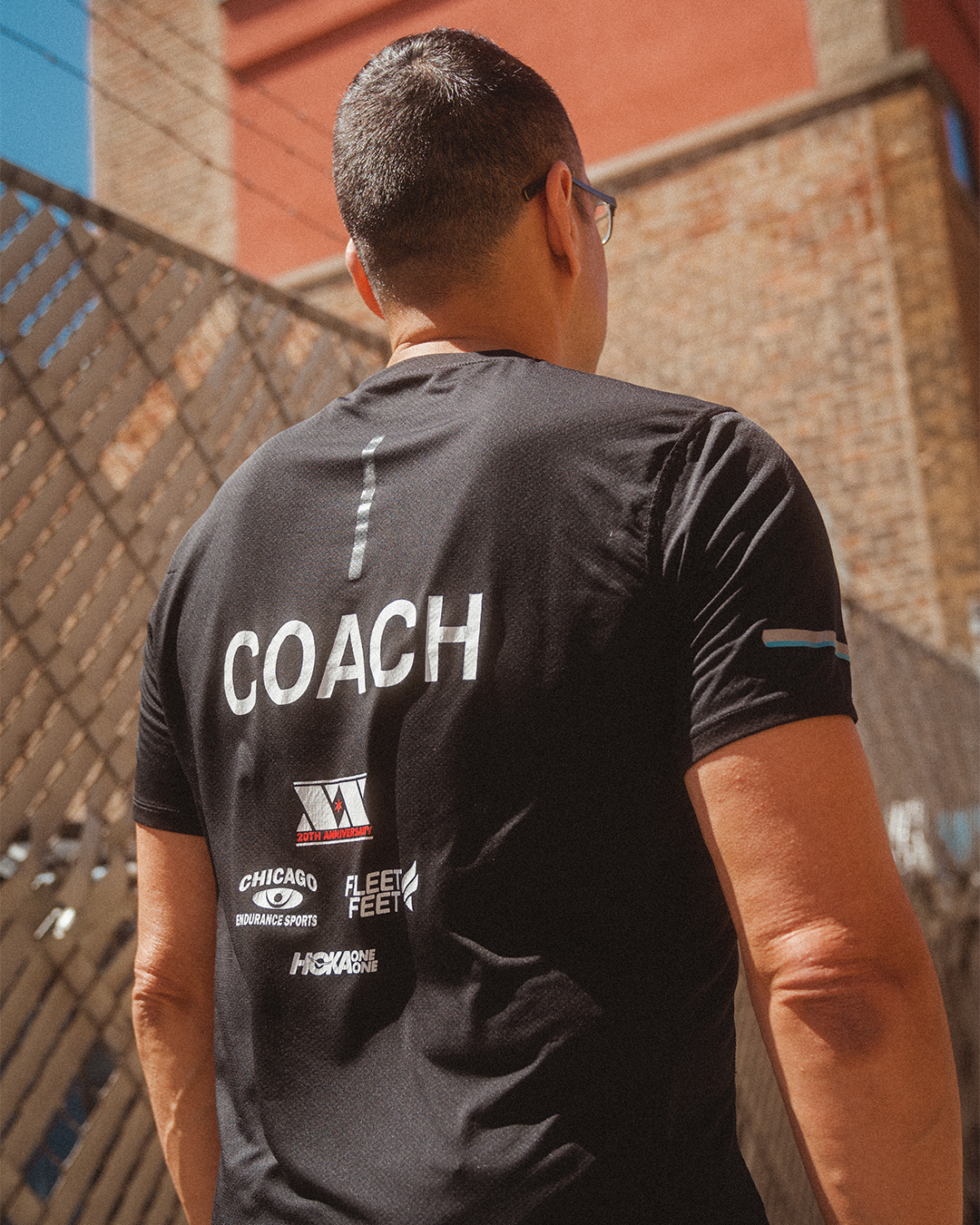
How many marathons have you run?
At least 35. I kind of lost track.
How long have you been a coach for the Chicago Endurance Sports marathon training program?
I started in October of 2010. So yeah. Going on 11 years.
What’s your marathon PR?
2:59:12.
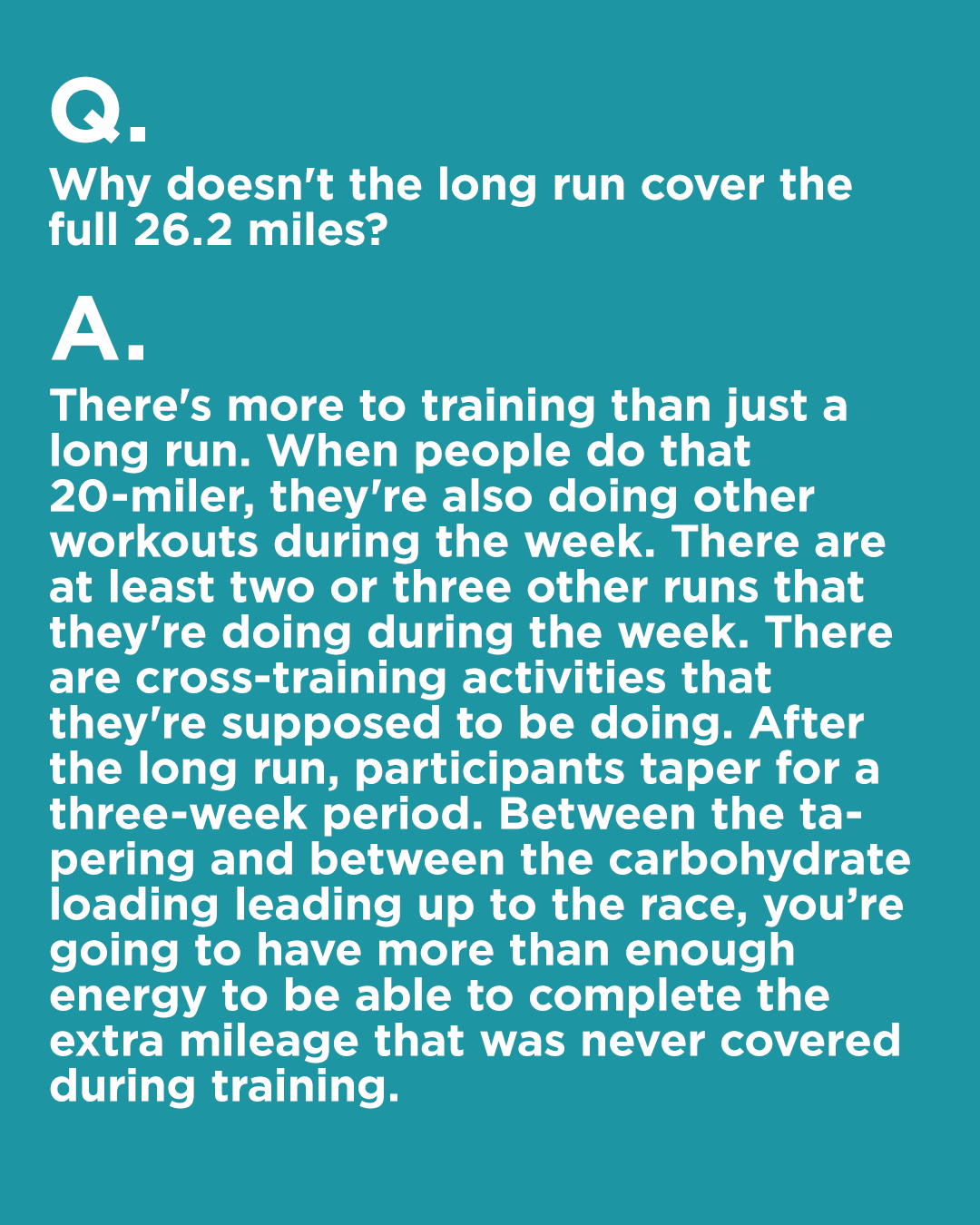 |
 |
What is the biggest difference between training solo and training with the group?
When you're training with a group you've got that extra accountability there that you don't necessarily have when you're by yourself. For example, I trained with Fleet Feet’s Boston Bound Boston Marathon training program a few years ago and normally I wouldn't bother going to Barrington to get in the long run, but knowing that there were people out there and there were people who were expecting me to be there, it helped keep me accountable. I think that's generally the same for a lot of the people who train with Chicago Endurance Sports. They want that accountability. Some people just won't work as hard without the group.
What is one piece of advice you'd give to someone training for a marathon for the first time?
Don’t be worried about whether or not you can cover the distance of the marathon. At this point, I think a lot of people are overwhelmed by the fact that they're going to be running 26.2 miles when maybe some of them have never run more than a 5K. It's okay to be nervous about it, but that's why we have the training programs. Chicago Endurance Sports training programs are designed so that if you get through the training successfully, you'll complete the race.
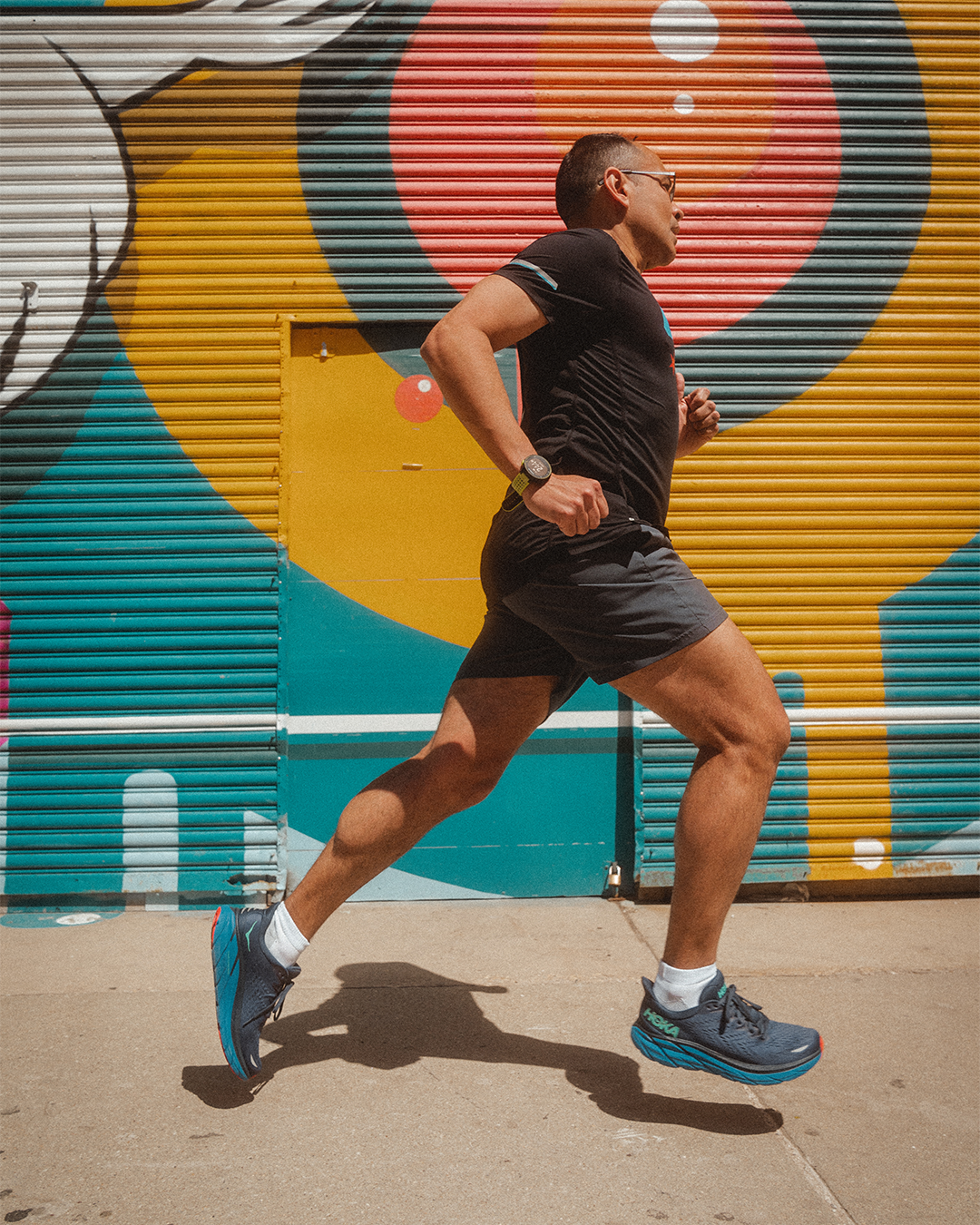
Why doesn't the long run cover the full 26.2 miles?
This is a question I get every year. The answer is because there's more to training than just a long run. When people do that 20-miler, they're also doing other workouts during the week. There are at least two or three other runs that they're doing during the week. There are cross-training activities that they're supposed to be doing. After the long run, participants taper for a three-week period. Between the tapering and between the carbohydrate loading leading up to the race, you’re going to have more than enough energy to be able to complete the extra mileage that was never covered during training.
What is a long run and what are the benefits?
The long run, depending on where you are in training, can be anywhere from six to eight miles at the beginning of the season to 16 to 20 miles at the end of the season. One of the purposes of the long run is just to train your body to be out on your feet for a really long period of time. While you're doing that, there are changes that are taking place in your body at the cellular level that enable you to be able to improve your endurance so that come race-day, you're able to go 26.2 miles. The big thing is just making sure that you get practice being on your feet for a long period of time.
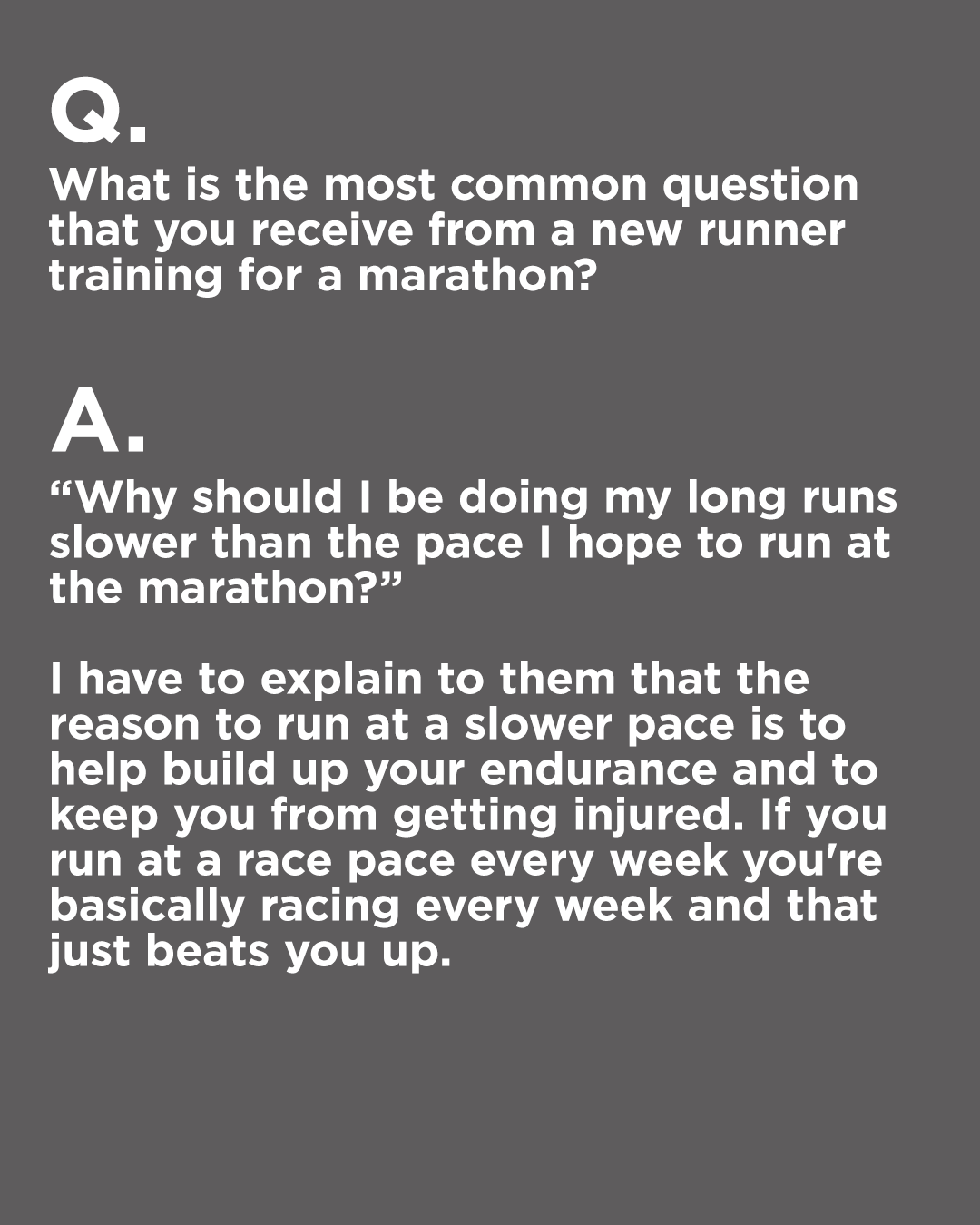 |
 |
What is one piece of must-have gear for marathon training?
Obviously a good pair of running shoes. You want to make sure that the shoes that you're wearing are right for your anatomy and physiology. You want to make sure that the shoes are new at the beginning of training.
What about a must-have accessory?
BodyGlide. Especially because we’re going to be sweating a lot during the summer, which can cause potential chafing. And also a hydration system. Water bottle, waist belt, something like that, to make sure that you're able to take in your fluids when you need them.
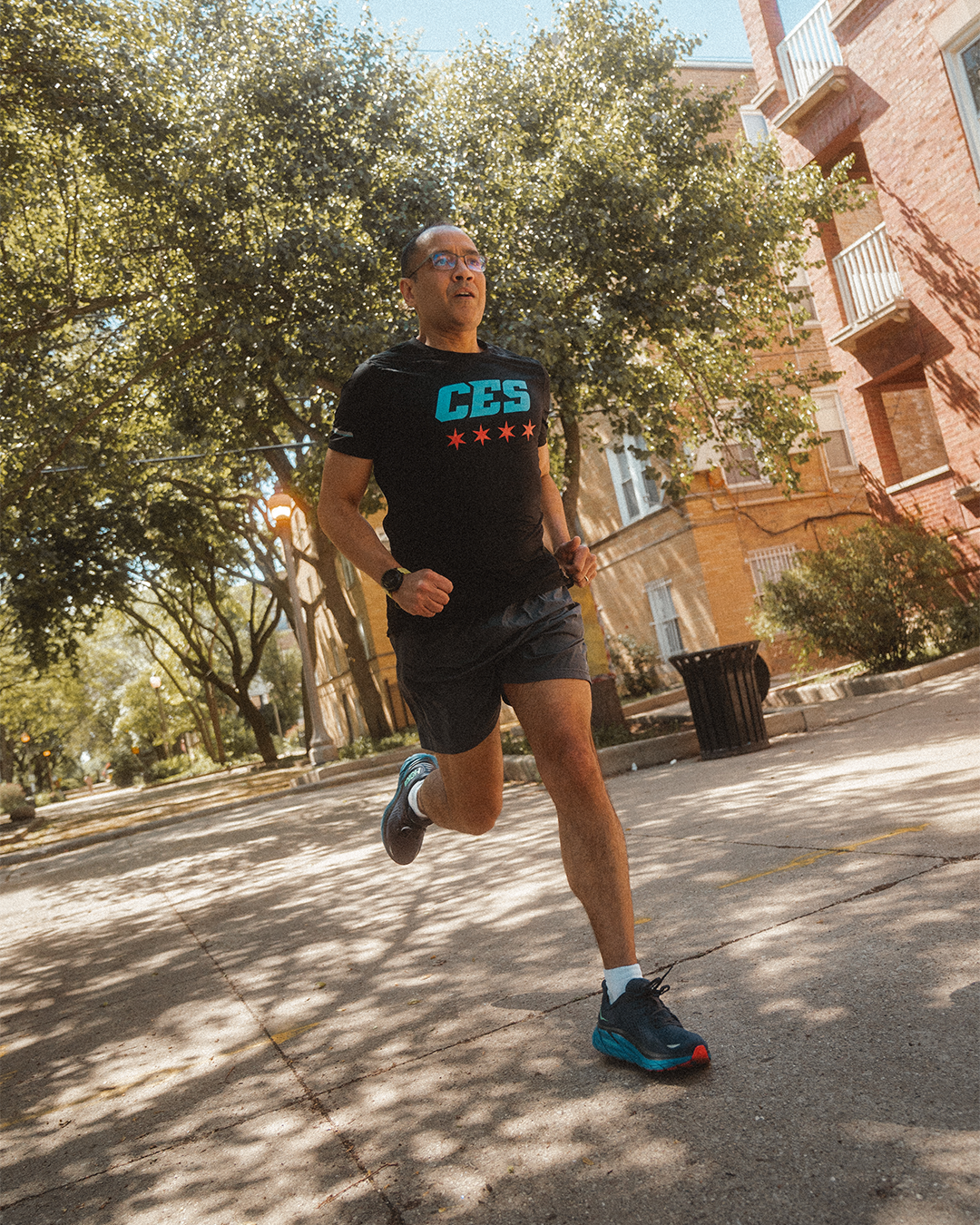
What is the most common question that you receive from a new runner training for a marathon?
“Why should I be doing my long runs slower than the pace I hope to run at the marathon?” I have to explain to them that the reason to run at a slower pace is to help build up your endurance and to keep you from getting injured. If you run at a race pace every week you're basically racing every week and that just beats you up.
On top of following the structure of a marathon training program, in terms of mileage, what's something else that someone could do to ensure a successful marathon?
Strength training. Core work. Being able to handle the demands of covering such a distance is more than just having the endurance. It’s also having strength. Every year I see lots of people who break down, not because their lungs can't handle it, but because their muscles can't handle it or tendons can't handle it. Making sure that you're doing something as simple as a 20-minute core workout, two or three times a week is going to make a huge difference.
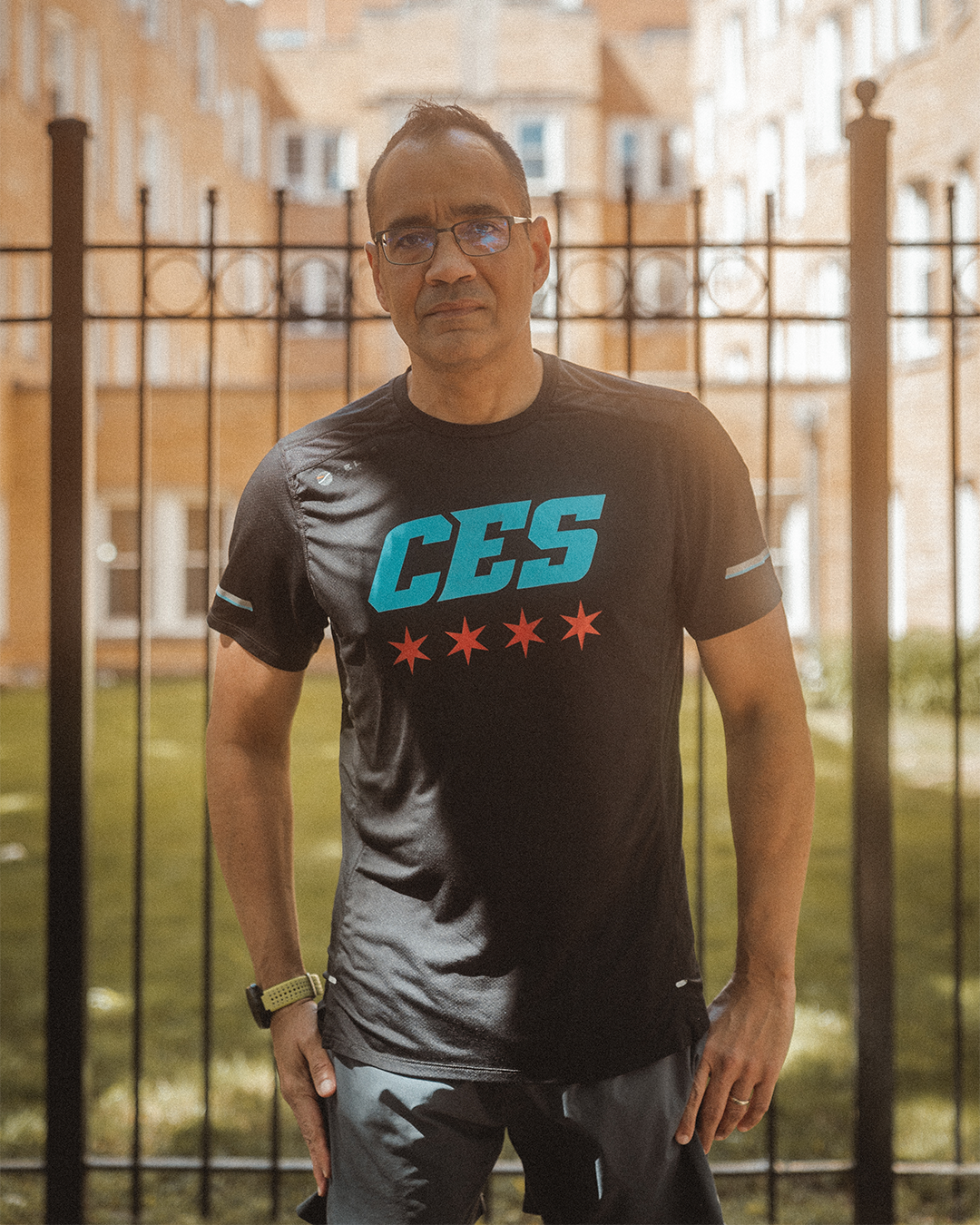
Connect With Us
See the latest from Fleet Feet Chicago